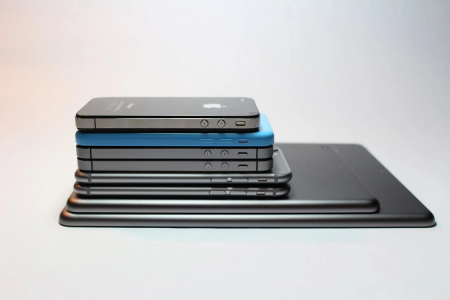Someone might be spying on your messages—use this ‘secret code’ to find out!
By
Maan
- Replies 0
Apple users discovered that a little-known feature on their iPhone could reveal whether someone was snooping on their private conversations.
At the heart of this feature was a hidden code that acted like a digital fingerprint for every iMessage chat.
If the codes between two people matched, their chats were safe—if not, it raised serious questions.
Apple explained that every iMessage conversation generated a unique security code, allowing users to check whether their messages were protected with end-to-end encryption.
If the codes did not match, it might mean that messages were being intercepted, or more innocently, that a contact had changed phones or reinstalled the app.
To simplify the process, Apple introduced Contact Key Verification under Settings and Apple ID, which displayed a verification code that both users could compare.
If the numbers lined up, users could tap ‘Mark As Verified’ to save the code to a contact’s card for future peace of mind.
‘When you manually verify a contact, iMessage Contact Key Verification verifies that the code you have saved matches the one provided by the iMessage servers for that contact and notifies you if the verification code changes,’ Apple explained.
Turning the feature on required navigating to Settings, selecting your name, scrolling to Contact Key Verification, switching on Verification in iMessage, and tapping Continue.
Apple stated: ‘When you use iMessage, your messages are end-to-end encrypted so that nobody other than you and the person that you’re messaging with, not even Apple, can read them while they’re in transit between devices.’
‘iMessage Contact Key Verification further protects your iMessage conversations and helps verify that you’re messaging only with the people that you intend.’
For added assurance, Apple said users could manually verify contacts saved in their device.
This involved going to Conversation Details, where both parties generated a code simultaneously to compare.
Alternatively, a Public Verification Code could be shared, allowing contacts to check authenticity.
Apple noted that this code contained no private information, meaning it could safely be posted on social media or shared elsewhere.
Users could then copy and paste a contact’s Public Verification Code into their Contact Card.
To do this, they had to open the conversation, tap the contact’s name or locate them in the Contacts app, then select Info, Edit, and add the code under the verification code field.
If the field did not appear, users could tap the Add (+) button, choose More Fields, and select ‘verification code.’
A verified code displayed a checkmark on the contact’s card and beside their name in iMessage conversations.
If no checkmark appeared, Apple suggested users double-check the code or confirm they were speaking with the right person.
Your devices are more intrusive than ever, not just in messages but during calls and video chats.
If you thought hidden codes in iMessage were a surprise, wait until you see how phones are now noticing what you wear—and interrupting your calls because of it.
It’s another example of how technology keeps evolving ways to impact our privacy and daily routines.
Read more: Back in the day, phones didn’t care what you wore (or didn’t)—now they’re interrupting video calls

Could this hidden code become the new standard for ensuring digital trust in personal conversations?
At the heart of this feature was a hidden code that acted like a digital fingerprint for every iMessage chat.
If the codes between two people matched, their chats were safe—if not, it raised serious questions.
Apple explained that every iMessage conversation generated a unique security code, allowing users to check whether their messages were protected with end-to-end encryption.
If the codes did not match, it might mean that messages were being intercepted, or more innocently, that a contact had changed phones or reinstalled the app.
To simplify the process, Apple introduced Contact Key Verification under Settings and Apple ID, which displayed a verification code that both users could compare.
If the numbers lined up, users could tap ‘Mark As Verified’ to save the code to a contact’s card for future peace of mind.
‘When you manually verify a contact, iMessage Contact Key Verification verifies that the code you have saved matches the one provided by the iMessage servers for that contact and notifies you if the verification code changes,’ Apple explained.
Turning the feature on required navigating to Settings, selecting your name, scrolling to Contact Key Verification, switching on Verification in iMessage, and tapping Continue.
Apple stated: ‘When you use iMessage, your messages are end-to-end encrypted so that nobody other than you and the person that you’re messaging with, not even Apple, can read them while they’re in transit between devices.’
‘iMessage Contact Key Verification further protects your iMessage conversations and helps verify that you’re messaging only with the people that you intend.’
For added assurance, Apple said users could manually verify contacts saved in their device.
This involved going to Conversation Details, where both parties generated a code simultaneously to compare.
Alternatively, a Public Verification Code could be shared, allowing contacts to check authenticity.
Apple noted that this code contained no private information, meaning it could safely be posted on social media or shared elsewhere.
Users could then copy and paste a contact’s Public Verification Code into their Contact Card.
To do this, they had to open the conversation, tap the contact’s name or locate them in the Contacts app, then select Info, Edit, and add the code under the verification code field.
If the field did not appear, users could tap the Add (+) button, choose More Fields, and select ‘verification code.’
A verified code displayed a checkmark on the contact’s card and beside their name in iMessage conversations.
If no checkmark appeared, Apple suggested users double-check the code or confirm they were speaking with the right person.
Your devices are more intrusive than ever, not just in messages but during calls and video chats.
If you thought hidden codes in iMessage were a surprise, wait until you see how phones are now noticing what you wear—and interrupting your calls because of it.
It’s another example of how technology keeps evolving ways to impact our privacy and daily routines.
Read more: Back in the day, phones didn’t care what you wore (or didn’t)—now they’re interrupting video calls
Key Takeaways
- Apple introduced Contact Key Verification to enhance iMessage security.
- Each iMessage chat generated a unique security code like a fingerprint.
- Users could verify contacts manually or with a Public Verification Code.
- A verified contact displayed a checkmark, confirming authenticity.
Could this hidden code become the new standard for ensuring digital trust in personal conversations?








